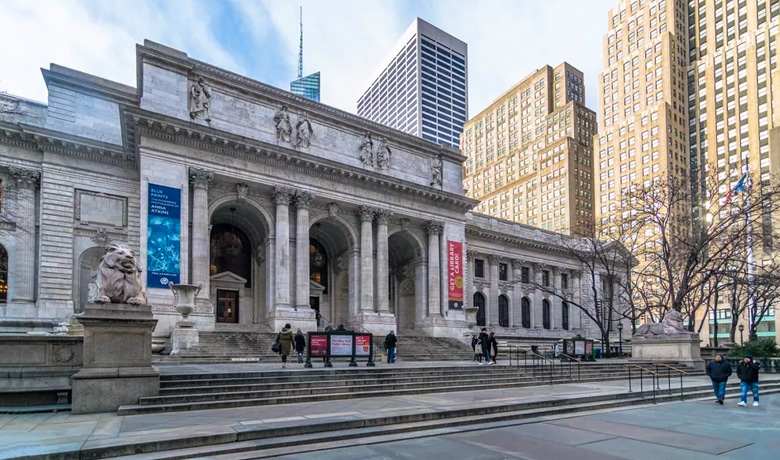Get news, updates, and insights delivered straight to your inbox.
5 Steps to Exceptional Brand Management Featuring the New York Public Library

Trying to keep track of your brand assets can often feel like the “wild west,” where documents and digital assets are scattered around shared folders and desktops, in multiple formats, versions, and channels, while employees who have gone rogue create non-compliant, unapproved assets to satisfy their immediate needs. It’s creative chaos.
This type of anarchic environment can wreak havoc on a brand manager and their strategy, not to mention the company’s overall brand equity. Having a strategic brand management process is a critical part of maintaining corporate identity, integrity, and trust.
As Rachael Silva, previously Director of Creative Services at the New York Public Library said during a webinar, “A brand is much more than just the visual identity, it’s the sum of the look, the feel, and the voice of the organization, which transfers to people’s experiences and the perception they have of the organization. We’re creating impressions and experiences through the materials we create. All of those things together make up how someone feels about your brand.” The story of The New York Public Library (NYPL) should be an inspiration to marketing teams around the world. In order to address the disjointed branding issue, they added brand management software to their technology stack, shifting from the “wild west” approach of creating new marketing assets, to a standardized system of accessing properly branded content. The result? Less burden on the library’s branch managers when they developed new marketing assets, and a more consistent brand message from all locations.
Here are the 5 steps they took to achieve cohesive brand management:
- Perform an audit of marketing assets – The team started by engaging with staff and leadership of the various branch locations in their large system. They wanted to better understand their company needs, identify current touchpoints with external target audiences, and determine where resources may be required for strategic brand management. Their audit found a lack of brand consistency from one branch to another, and although the organization needed to keep a sense of local community, they had to maintain a consistent brand position and experience overall. The audit was a critical starting point as they learned they had a strong brand loyalty and reputation, but complex and fragmented identity. The audit was critical in showing where their brand consistency efforts should focus.
- Establish a brand guide – Once the branding audit was complete, the team took alook at the overall brand identity. Without changing the core and well-known logo of the Library, Rachael’s team needed to define a consistent identity, look and feel across all materials. First, they established guiding principles that all materials should reflect, based on what the Library stands for: “Welcoming, knowledgeable, inspiring, and dynamic.” This consistent branding design framework was the foundation upon which they then built core brand guidelines.
- Educate employees – To ensure employees and vendors (such as freelance designers or architects) were brand compliant with the new brand guidelines, the team developed easy-to-use tools and resources, and most importantly made them widely accessible They ensured the guide had detailed insights including examples. But, the guidelines themselves were not enough to keep employees coming back. The team wanted the brand guide to be part of the daily life of each team member.
- Use technology for brand management – The team wanted to create a brand center where employees and vendorscould use tools and create brand assets in a dynamic way. They partnered with MarcomCentral to launch an online brand resource center, with the idea to empower staff, create efficient workflows, and establish reporting tools to ensure compliance and usage. The new resource center allowed the NYPL’s 2400+ employees to create customized assets while remaining brand compliant. The brand management portal also featured easy navigation and search functionality to allow employees to quickly find certain assets (preventing them from asking the centralized marketing department for one-off requests.)
- Get employees on board with a training program – The team knew it was important for employees to understand the value of using a brand management platform. They embarked on an engagement process to increase adoption and make sure the technology was successful. This involved training, education (such as a short overview video), and empowering staff to explore the tool, find what they need, and realize quick time-to-value. The engagement plan included five components:
- Listening – Sharing the findings of the brand audit report and generating excitement about the forthcoming tools and resources.
- Testing – Garnering feedback from core users to identify changes necessary for adoption
- On-boarding – Presenting the brand refresh and technology to executive leadership and on-the-ground managers tailored to their business point of view
- Training – Offering multiple training sessions in classrooms and on WebEx conferences.
- Retention – Setting up a feedback chain to respond to issues, questions, and needs, while continuously developing new resources to encourage repeat visits.
While the NYPL chose to use MarcomCentral’s asset management technology, it’s not a requirement to get your initiative started. Any organization can improve brand consistency by focusing on steps 1-3 and ensuring time and resources (big or small) are adequately allocated to the project.
We applaud the hard work of the New York Public Library team, who embarked on this 5-phased journey across 92 locations, 3 boroughs, and thousands of employees. For such a notable and respected organization, brand management is a critical part of protecting and optimizing not only the customer’s brand experience, but also the legacy of such an important institution.
Updated from the original post on November 29, 2017
You might also like


